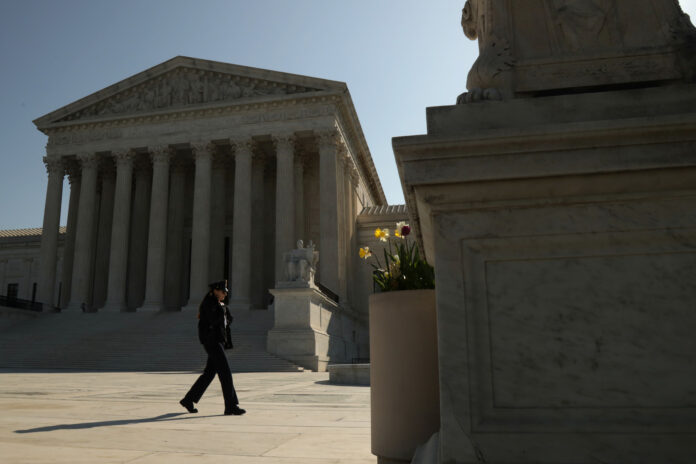The Supreme Court in a ruling Monday allowed the Consumer Financial Protection Bureau to continue operating, but said that the director of the consumer watchdog could be removed by the president of the United States “at will.”
The decision, written by Chief Justice John Roberts, agreed with a California-based law firm’s argument that the CFPB’s leadership by a sole director who was removable “only for cause” violated the separation of powers rule under the U.S. Constitution.
The 5-4 ruling overturns a federal district court ruling and appellate court decision that had rejected the law firm’s arguments.
“The agency may therefore continue to operate, but its Director, in light of our decision, must be removable by the President at will,” Roberts wrote in his majority decision, where he was joined the court’s other four conservative justices.
Justice Elena Kagan, in a dissent joined by her three liberal colleagues, wrote the that majority failed to respect the proper role of the Supreme Court in allowing the two political branches of government, Congress and the presidency, to decide how to structure the executive branch of the government.
“Today’s decision wipes out a feature of that agency its creators thought fundamental to its mission — a measure of in-dependence from political pressure,” Kagan wrote.
A police officer walks in front of the U.S. Supreme Court April 6, 2020 in Washington, DC.
Alex Wong | Getty Images
The CFPB oversees consumer financial markets like credit cards and home mortgages. It returned nearly $12 billion to consumers through 2017, before largely curtailing enforcement actions under President Donald Trump.
The CFPB was first envisioned by Sen. Elizabeth Warren when she was a professor at Harvard Law School.
The board later was established by Congress under President Barack Obama in the wake of the 2008 financial crisis.
The bureau’s constitutionality was challenged by the firm Seila Law, which alleged that the CFPB’s director’s protection from dismissal by the presidential was unlawful. The firm, which provides debt-related legal services to clients, was fighting a civil demand for information and documents from the CFPB related to the firm’s practices.
Under the 2010 law establishing the bureau, the director is appointed for a five-year term and may only be removed for “inefficiency, neglect of duty, or malfeasance in office.”
In his ruling, Roberts noted the the leadership structure of the CFPB “has no foothold in history or tradition,” and that Congress has given protection from removal to principal officers of agencies in just four “isolated instances.”
Those were for the the Comptroller of the Currency for just a a one-year period during the Civil War, the Office of Special Counsel, the administrator of the Social Security Administration, and the director of the Federal Housing Finance Agency.”
“Aside from the one-year blip for the Comptroller of the Currency, these ex-amples are modern and contested; and they do not involve regulatory or enforcement authority comparable to that exercised by the CFPB,” Roberts wrote.
He added that, “The CFPB’s single Director configuration is also incompatible with the structure of the Constitution, which — with the sole excep tion of the Presidency — scrupulously avoids concentrating power in the hands of any single individual.”
Jeremy Funk, spokesman for consumer watchdog group Allied Progress, in a prepared statement said, “The Roberts-led Corporate Court strikes again, predictably siding with industry groups that have an axe to grind against the CFPB or a financial motive in seeing the agency weakened.”
“The CFPB’s independence is what allowed it to be a powerful and effective advocate for consumers in the past, but the high court ruled that the agency should instead be guided by the political whims of the President,” Funk said.
The case is formally known as Seila Law v. Consumer Financial Protection Bureau, No. 19-7.






